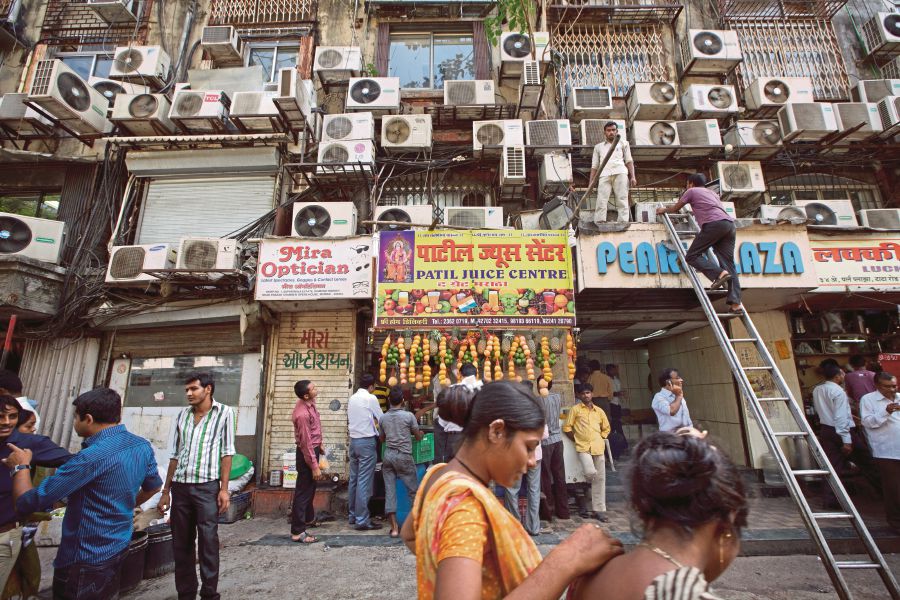Perhaps for the same reason that remodelling a kitchen is more enticing than replacing a water heater, devising greener refrigerant chemicals will never make headlines the way solar installations or electric cars do.
But, fixing how we cool ourselves may also help fix the climate. New research from the Lawrence Berkeley National Laboratory in California indicates that adding improved efficiency in refrigeration and phasing out fluorinated gases used for cooling, as mandated by international agreement, could eliminate a full degree Celsius of warming by 2100. Given that the “business as usual” trajectory leads to four to five degrees Celsius of warming, that is shaving off a pretty big slice.
Hydrofluorocarbons, or HFCs, account for about one per cent of global greenhouse gas emissions, but they can be thousands of times as potent as carbon dioxide and may account for up to 19 per cent of emissions by 2050 if their manufacture continues unchecked.
That’s because from India to the Philippines to South Africa, air-conditioners are increasingly a must-have item. Less than 10 per cent of homes in India have units, but air-conditioning makes up 40 to 60 per cent of the country’s electricity demand in major cities like New Delhi. Businesses and homeowners in Asia and Africa are expected to buy about 700 million air-conditioners by 2030, and 1.6 billion by mid-century. Without major changes in the way we cool ourselves, those units will, in turn, crank up the global furnace.
“This is going to matter a lot,” said Lucas Davis, an associate professor at the Haas School of Business at the University of California, Berkeley. “If one is thinking about energy and environment in the next couple decades, you have to think about cooling.”
One way to curb emissions associated with air-conditioning is already in the works: the Kigali amendment to the Montreal Protocol, the landmark 1987 pact designed to close the hole in the ozone layer by banning ozone-depleting coolants called chlorofluorocarbons, or CFCs. Manufacturers found a substitute in HFCs, and while those didn’t degrade the ozone layer, scientists soon discovered that they acted as worrisome warming agents.
The amendment reached last year in the capital of Rwanda binds nations to phase out HFCs, avoiding an estimated half degree Celsius of warming by 2100. It was embraced by environmentalists and industry leaders alike, but its fate in the United States is unclear.
Scientists, activists and business leaders are meeting in Bangkok this week to discuss how to finance the phasing out of HFCs. Many there said they were confident the amendment would survive.
“It is imperative that we use the successful process started 30 years ago to protect the ozone layer and to ensure consumer access to technologies worldwide that contribute to health, safety and energy efficiency,” Kevin Fay, executive director of the Alliance for Responsible Atmospheric Policy, which represents 95 per cent of US refrigerant manufacturers, told delegates at the meeting.
Efficiency doesn’t require a global treaty. It does, however, call for new regulatory policies on manufacturing standards and labelling.
It matters, researchers say, because cooling has a direct relationship with the building of coal-fired power plants to meet peak demand. If more air-conditioners are humming in more homes and offices, then more capacity will be required to meet the demand. So, 1.6 billion new air-conditioners by 2050 means thousands of new power plants will have to come online to support them.
The Lawrence Berkeley study argues that even a 30 per cent improvement in efficiency could avoid the peak load equivalent of about 1,500 power plants by 2030. But, most countries have a lot of work to do in modernising their energy policies.
“Many countries haven’t updated their standards in a while,” said Nihar Shah, a senior scientific engineering associate at the Lawrence Berkeley laboratory and lead author of the study, which examined the markets of 19 nations. “In most of these countries, there’s an opportunity to do both things together.”
Durwood Zaelke, president of the Institute for Governance and Sustainable Development, a nonprofit based in Washington that commissioned the lab study, said efficiency was not getting enough attention.
“We don’t pay attention to the fact that demand for air-conditioning is growing, just as the world is becoming more populated and richer, and will grow at a much greater rate as the world gets warmer,” he said.
The countries driving the bulk of demand for air-conditioning — China, Brazil, India and Indonesia — have energy efficiency improvement policies like labels and incentive programmes. But, improvements to China’s policies could have sweeping gains, because it is the main exporter to countries primarily in Southeast Asia, where demand is growing. India’s Power Ministry is working to develop a programme for bulk purchases of super-efficient air-conditioners, which may include refrigerant alternatives to HFCs.
Source: New Straits Times | 15 July 2017














